By Dan Weisz
Chances are the Title of this page got your attention. It refers to two types of butterflies that are now, thanks to the incredible summer rains, very abundant in my yard. I’ll be sharing photos of the American Snout butterfly and the Sleepy Orange butterfly! Below is a photo of an American Snout. Can you see his ’snout’?
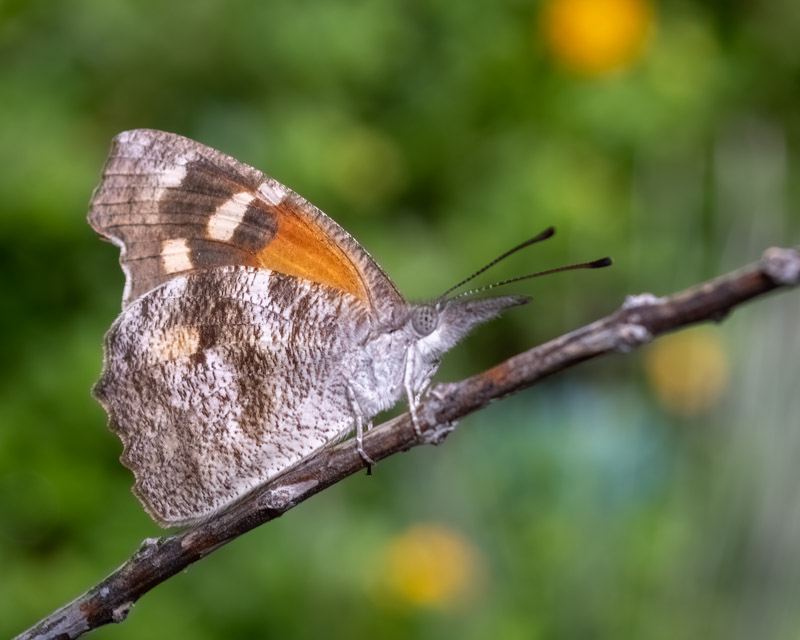
Snout butterflies have very elongated mouthparts which, along with the antennae, give the appearance of the stem of a dead leaf. Those features along with the drab color of the underwings, help to camouflage the American Snout butterfly as it hangs still on a stem or branch of a plant. Often they will hang upside down just like a dried leaf. Because of their drab brown looks, many people mistake these butterflies for moths, but they are not moths.

The color of the top sides of the American Snout’s wings are black or brown and patterned with orange and white spots. The Snouts were all over my Bird-of-Paradise plant.
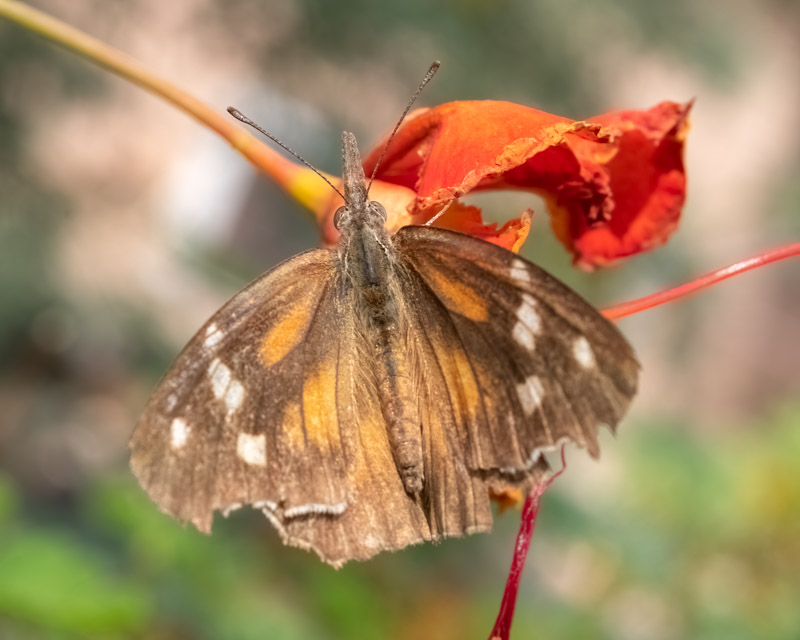
Here is a close-up of the snout (the mouthparts) and antennae of an American Snout. This photo was taken early one day after a rainy night and rain drops are still present on the branch of the Mexican Bird-of-Paradise plant that was covered in Snouts.
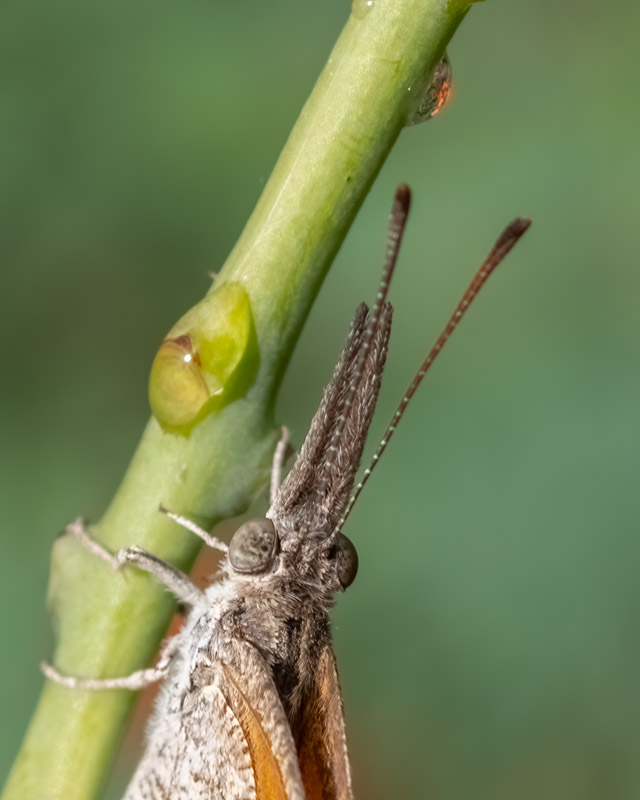
American Snouts go into a sort of hibernation during droughts, but the rain brings them out all at once to lay eggs causing a population explosion. In some states, there are large massive migrations of Snouts during this season and into the fall. It’s likely we have so many Snouts in Tucson now due to a large movement up from Mexico that followed the monsoon weather systems. Perhaps the Snout below is just resting after a long journey.
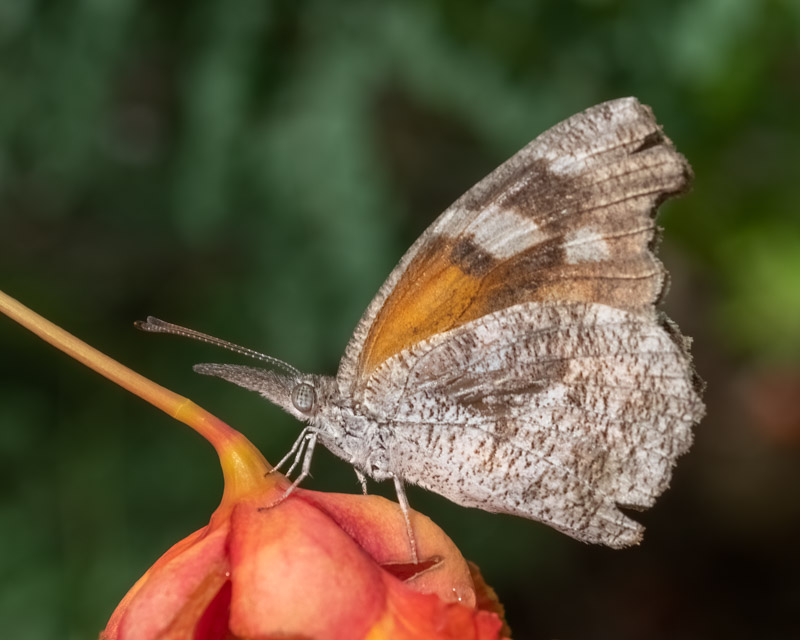
The other butterfly that I am seeing many of is the Sleepy Orange. These butterflies seem to prefer my vitex plant rather than the Mexican Bird-of-Paradise.
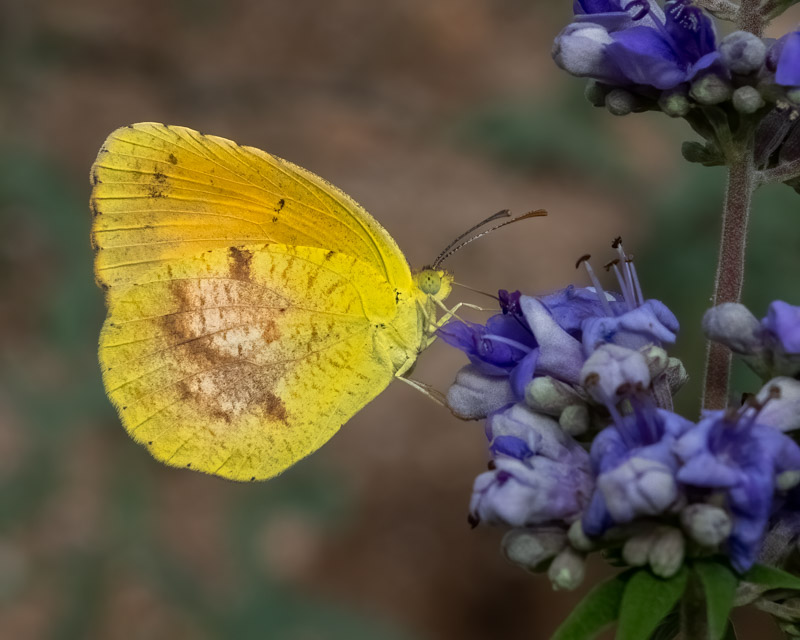
The Sleepy Orange is bright yellow on the underside of its wings. The wing colors and patterns vary seasonally, with summer forms much brighter.
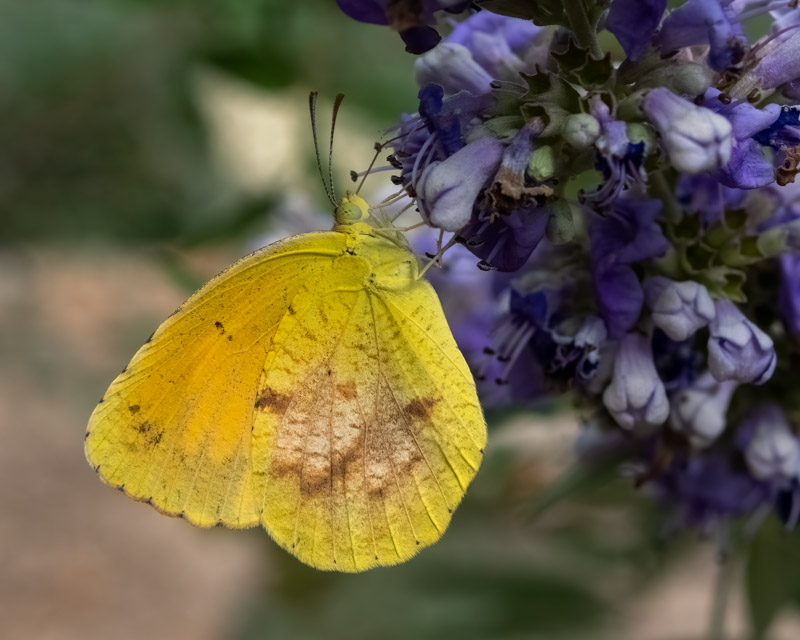
The top, or upper side of the wings are bright orange. I was not ready to shoot moving butterflies as I was looking for the ones sitting still on the flowers. These two butterflies began interacting and circling each other. I took photos but the slower shutter speed resulted in much blur in the butterflies. Still, this photo captures the wide black/brown borders of the upper wings.

Most often, a Sleepy Orange would alight on a flower stalk and stay for a while, sipping nectar and allowing me to get closer for the photograph. This butterfly does not have the aged brown spotting seen in the first Sleepy Orange photo. Be aware that there are many other small yellow-isa butterflies around these days. Not all are Sleepy Oranges but all are pretty in their own right!
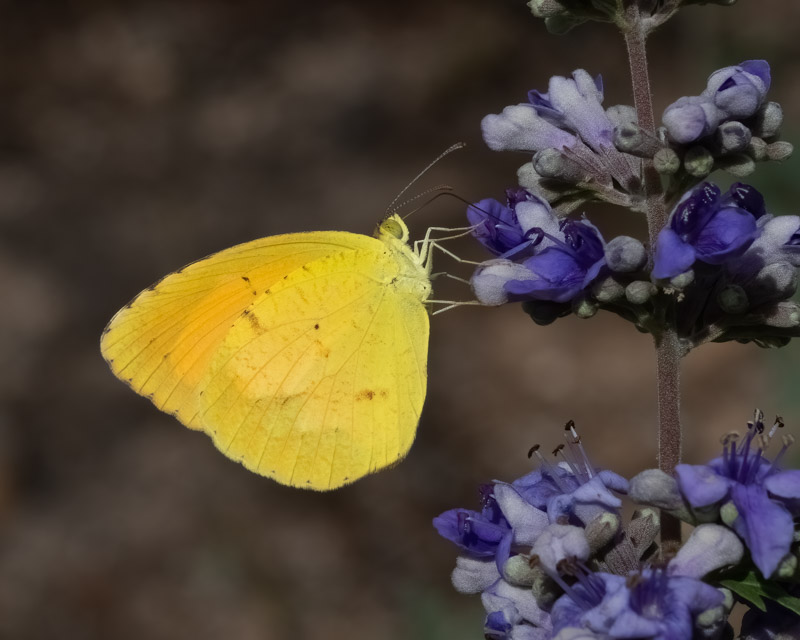
And a final look at a Sleepy Orange. The flowers’ stamens look similar to the antennae of the butterfly giving this photo a different look.
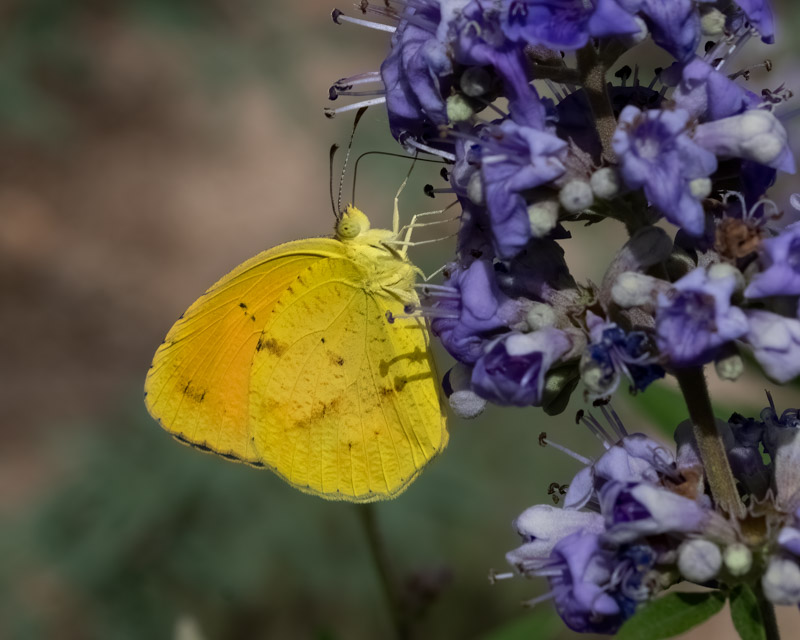
The rains also brought out some other butterflies and insects and the cool and wet weather caused many of my cacti to bloom. I’ll share those in the next email.
